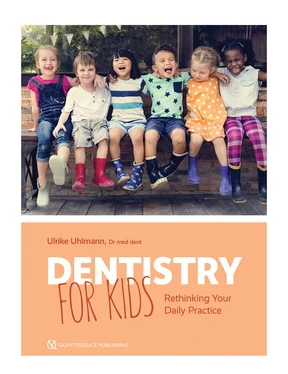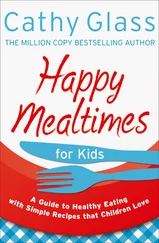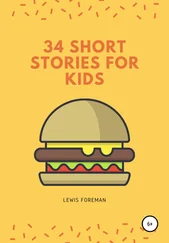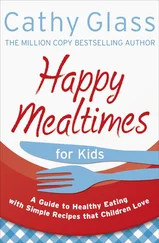In terms of whether or not children are drinking enough liquid, dentists can reassure parents that no child will voluntarily die of thirst! Children are not just taking in liquid when they drink but also nutrients in a bound form. Infants who are fully breastfed do not need any additional fluid intake. When more solid foods are introduced at about 7 months old, an additional fluid intake of approximately 200 mL/day should be provided in the form of water. 24
Without a doubt, water is the best thirst quencher. Parents need to be told that taste is instilled or acquired in children. The sentence “My child doesn’t drink water” is merely the result of wrongly acquired drinking habits based on a bad example. The effect of parents as role models in training their children’s dietary and drinking habits is not to be underestimated. Flavored water is not, as many parents assume, a healthy alternative.
How they drink it
How children drink is also important. Roughly at the start of eating solids, children can learn how to drink from normal, thin-walled cups. At this age, infants cannot sit up by themselves yet, but if half-sitting with proper support for their head, they can drink out of a cup. It is entirely unnecessary to get infants accustomed to drinking from a bottle or from a training cup before transitioning to an open cup. Training cups like these prevent the development of a somatic swallowing pattern 5and can result in myofunctional and speech issues if the immature sucking pattern persists. 25If drinking in a sitting position is practiced, the cup should be well-filled, especially at the start because infants cannot yet tip their heads back to drink. Obviously they might spill a bit to begin with and even swallow the drink all at once, but parents will notice that drinking from a cup is a thoroughly intuitive process that children observe and imitate (Fig 3-7).

Fig 3-7 (a and b) Eight-month-old infant drinking from a normal, thin-walled cup.
If parents prefer a training cup while on the go, those without a spout or teat attachment are suitable. There are also leak-proof screwable cups for carrying around, enabling infants to drink quite normally from the edge.
TIPS FOR ENCOURAGING HEALTHY DRINKING HABITS
• Water, water, and more water: Parents greatly underestimate the erosive and cariogenic potential of juices and carbonated beverages. Children should primarily drink plain water (not flavored water).
• Be a role model: Mom and dad can hardly urge their child to drink water if they are drinking soda or iced tea.
• Use a regular cup: Sippy cups or other training cups can train the muscles improperly. Children should be introduced to a regular cup before their first birthday.
• Bottle use: It is extremely important not to let children constantly suck on a bottle. Even a bottle of milk or something similar as a bedtime ritual is dangerous and can lead to ECC very quickly. Children should be offered something to drink several times a day, but a bottle should not be a toy, a pacifier substitute, or a method to calm a child down.
Sugar and childhood obesity
American children consume too much sugar, and this is a leading contributing factor to childhood obesity. The US Centers for Disease Control and Prevention report childhood obesity at 18.5% in the United States (13.9% for 2- to 5-year-olds, 18.4% among 6- to 11-year-olds, and 20.6% among 12- to 19-year-olds), with greater percentages among Hispanic and non-Hispanic black populations. 26It is becoming increasingly apparent that the assumption in recent decades that fats are largely responsible for obesity cannot really be supported. Studies show that sugar in particular has a very negative influence on the overall metabolism. Even in experiments where the total calories remained the same but the amount of sugar was reduced, positive effects such as lowered blood sugar, lowered LDL cholesterol, lowered triglycerides, improved liver function, and lowered insulin levels became apparent quickly. In addition, the subjects under a low-sugar diet reacted much more strongly to satiety stimuli. This shows that “one calorie is not equal to one calorie.” 27
Obesity and its accompanying symptoms are now among the most pressing health issues worldwide. In most cases, it is children who suffer from obesity for the rest of their lives, because, contrary to popular belief, people do not grow out of being overweight; rather it is a serious disease. While diet is not the only contributing factor to obesity, it is our responsibility as pediatric dentists to address it for the sake of our young patients’ health. Specifically, we can raise parents’ awareness of this subject and expose and thereby prevent possible dietary traps. These include too frequent and uncontrolled snacking between meals, portion sizes that are too big, and calorie intake that is too high (eg, when drinking smoothies or soft drinks). Parents should also be alerted to the tricks of the industry (“healthy” flavored water, extra-sweet products for children, and sweets at children’s eye level at every supermarket checkout). It is up to parents to make conscious choices to limit their child’s sugar intake. Of course some sweets are inevitable and perfectly fine in life, but the key is moderation.
TIPS FOR ENCOURAGING HEALTHY EATING HABITS
• Eat meals together as a family: It has been proven that children eat healthier when there is a dedicated meal time free of TV or other distractions.
• Be a role model: You cannot expect a child to eat healthily if the parent does not offer healthy choices or eats junk food themselves.
• Timing: Sugar-free breaks are important so that the teeth have time to remineralize and the saliva can buffer the acidic pH. Even healthy foods like fruit should be eaten in one sitting and not nibbled on throughout the day to prevent the accumulation of sugars on the teeth.
• Natural sugar is still sugar: Honey and other naturally sweet products are still full of sugar and should be moderated just like artificial sugars. While dried fruits can be a great snack, they are naturally sticky and adhere to the occlusal surfaces for a long time, so parents should limit their consumption.
• It’s all about moderation!
• Marketing to children: Products especially designed for children usually contain up to 20% more sugar than the normal alternative. Parents need to know this.
• Food consistency: The consistency of food is crucial for good teeth and jaw development. Children do not need smoothies or drinkable yogurts but rather things to chew on in order to develop jaw muscles.
REFERENCES
1.American Academy of Pediatrics. AAP Recommends Fluoride to Prevent Dental Caries. https://www.aap.org/en-us/about-the-aap/aap-press-room/Pages/AAP-Recommends-Fluoride-to-Prevent-Dental-Caries.aspx
Конец ознакомительного фрагмента.
Текст предоставлен ООО «ЛитРес».
Прочитайте эту книгу целиком, купив полную легальную версию на ЛитРес.
Безопасно оплатить книгу можно банковской картой Visa, MasterCard, Maestro, со счета мобильного телефона, с платежного терминала, в салоне МТС или Связной, через PayPal, WebMoney, Яндекс.Деньги, QIWI Кошелек, бонусными картами или другим удобным Вам способом.













